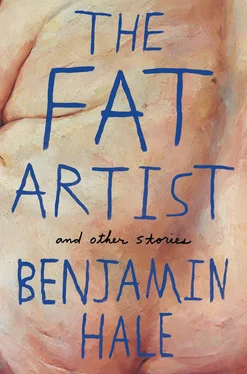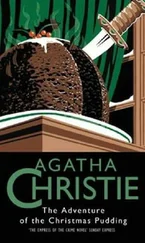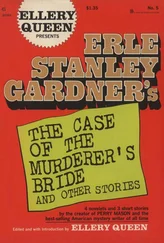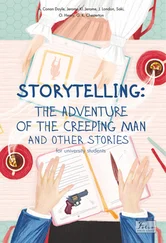How did she come to be here? How was it that she was dressed in fishnet stockings, a garter belt, a leather corset, and a red wig, holding a creepy South African rhino-skin whip and sitting alone in a luxury apartment in Washington, D.C., with the dead body, which was naked except for the rope on his wrists and the nipple clamps still on his nipples, of a US congressman?
There was more. Rebecca had begun to experience an inexplicable feeling that she had never quite felt before. It was a vaguely pleasant feeling, and hard to describe: a warmth — a sense of calm she had not felt in a long time, if, in just this way, ever. For various reasons, she had not thought it likely, but suspicion had driven her to the drugstore down the block from her apartment, and earlier that day, she had met Sam for the first time with a secret of her own, one she very literally carried inside her. She had not yet made a decision. Until today, she had been leaning one way, and now, she was leaning another.
Rebecca thought again of her mother. Well, Mom, she said to her, so it goes. We don’t plan to be disappointed. We don’t plan to be betrayed. We both know that. Nobody plans to suddenly leave a lover with a body on her hands and the eyes of a watchful nation to face, to be seen by, to stand before naked, nude, on display, Venus looking back at them in the mirror, gazing at her gazers. They will not understand. You will not understand. We are all at once bodies and mirrors, and our minds are the curves in the mirrors.
• • •
Rebecca Spiegel went into the kitchen and picked up the phone.
Beautiful, Beautiful, Beautiful, Beautiful Boy

The Dakota, 1 West 72nd Street. Edward Cabot Clark, head of the Singer Sewing Machine Company, commissioned the building’s design from architect Henry Janeway Hardenbergh; construction broke ground in Manhattan’s then-undeveloped Upper West Side on October 25, 1880, and was completed four years later. Its layout and floor plan reflect French trends in interior design popular in New York City in the late eighteenth century, and its decorative exterior shows strong influence of North German Renaissance architecture: high gables, deep roofs, turrets, dormers, terracotta spandrels, panels, niches, and balconies with balustrades. Square-shaped and eight stories high, it fills the city block between Seventy-Second and Seventy-Third Streets on Central Park West, with a porte cochere leading to a courtyard that served as a turnaround for carriages. No two of the building’s sixty-five luxury apartments are alike, as many of them were designed to the specifications of their first occupants, which would have included Edward Cabot Clark himself had he not died two years before construction was completed. Soon after its construction it became a point of pride among New York high society to live in the Dakota, and it is still among the most exclusive and expensive addresses in Manhattan. Famous residents have included Leonard Bernstein, Lauren Bacall, Rosemary Clooney, Judy Garland, Lillian Gish, Boris Karloff, Jack Palance, and John Lennon and Yoko Ono.
• • •
One hundred years, one month, and thirteen days after construction on the Dakota began, Mark David Chapman spent most of December 8, 1980, waiting outside the building’s gated south entrance on Seventy-Second Street between Columbus Avenue and Central Park West with a copy of The Catcher in the Rye , a Charter Arms.38 Special loaded with hollow-point bullets, and a copy of John Lennon and Yoko Ono’s album, Double Fantasy , which had been released three weeks before. Around midmorning, Chapman met Lennon’s housekeeper, who was returning to the building from a walk with Lennon and Ono’s only child together, Sean, who was then five years old. Chapman touched the child’s hand and said, “Beautiful boy,” quoting the song Lennon had written about his son, the final track on the first side of Double Fantasy . Around 5:00 P.M., Chapman met Lennon as he and Ono were exiting the building on their way to a recording session. Chapman silently handed him his copy of the album for an autograph; Lennon obliged and handed it back, saying, “Is this all you want?” Chapman accepted the autographed album, smiled, and nodded yes. At about 10:50 P.M., Lennon and Ono returned to the Dakota. Ono passed through the gate of the reception area leading into the courtyard, Lennon following a few steps behind her. From directly behind him, Chapman opened fire, discharging the revolver five times in quick succession. The first bullet missed and the other four landed in Lennon’s back.
• • •
Derek Fitzsimmons spent most of December 8, 1980, sixty-six blocks south of the Dakota at the Sheridan Square Playhouse, in dress rehearsal for a production of Charles Ludlam’s Ridiculous Theatrical Company’s Love’s Tangled Web , which Ludlam had written and was directing and starring in. Derek was twenty-four years old. He had graduated from the Fashion Institute of Technology a few years before, and was living with his boyfriend, Tom, in a studio apartment in Forest Hills. He was dressing the actors backstage at the Ridiculous, and performing small onstage roles in Ludlam’s productions. Ethyl Eichelberger was in that production. He had met Ethyl earlier that year when he was doing wardrobe at the Lucille Lortel Theatre for a production of Caryl Churchill’s Cloud 9 . Ethyl had just moved back to New York from Rhode Island, where he’d been the lead character actor for seven years at Trinity Rep. When she came back to New York she changed her name from whatever it was before to Ethyl Eichelberger, and got a tattoo of himself as an angel on his back. That tattoo was somehow an important part of Ethyl’s becoming Ethyl. Ethyl was only hired to make the wigs for that show at the Lucille, though she had already been in a few of Ludlam’s Ridiculous productions, and was beginning to do her solo shows. They became friends backstage at the Lucille, and wound up working together often. They both performed in drag, and Ethyl invited Derek to perform in some of her shows. Ethyl was, though only for a brief time, a mentor to Derek.
• • •
Six months after John Lennon was assassinated, Derek was at Club S.n.A.F.U. on Sixth Avenue and Twenty-First Street, standing onstage while Ethyl did her Lucrezia Borgia show. Ethyl always beat him to the finish line in the dressing room. Derek’s approach to his makeup was delicate and precise. He wanted every false eyelash in place. His lip liner looked machine-etched on. Derek would lose himself in the mirror, falling into his reflection like Narcissus: spacing out, spending fifteen minutes alone perfecting his foundation. Ethyl, eleven years his senior, found this fastidiousness of his silly and endearing — a mark of his youth and relative inexperience. Ethyl’s drag aesthetic was decidedly old-fashioned, as far as it could be said that there are conservative schools of the art form. She found it distasteful that some of the younger drag queens seemed to really want to be able to pass for women, with their rubber breasts, worshiping at the style altar of Diana Ross. For Ethyl, the whole thing was supposed to be redolent of the circus, of Weimar Republic cabaret; he wanted a face painted halfway between clown and whore. Ethyl slapped her makeup on in twenty violent minutes: ghost-white foundation, that night, glittering triangles of gold eye shadow with metallic magenta streaks, false lashes like tarantula legs dragged through the black mud of her mascara, red lipstick she stabbed on in three bellicose jerks of the wrist.
Derek was emceeing that night. It was his job to introduce Ethyl, then simply stand back and become a living set piece as Ethyl turned the tiny stage into a lavish spectacle — pure Satyricon . Sometimes, before the show, Derek would open with his Rosemary — his first, and admittedly not his most tasteful, drag persona: Rosemary, the retarded Kennedy sister lobotomized by Dr. Walter Freeman and shamefacedly sequestered out of sight, drooling in a rocking chair and gazing vacant-eyed out of some attic window. Rosemary was a combination of a drag performance, a satire on moneyed Cape Cod, and a playground-quality retard act on the maturity level of why-are-you-hitting-yourself, and of course it brought the house down every time.
Читать дальше













